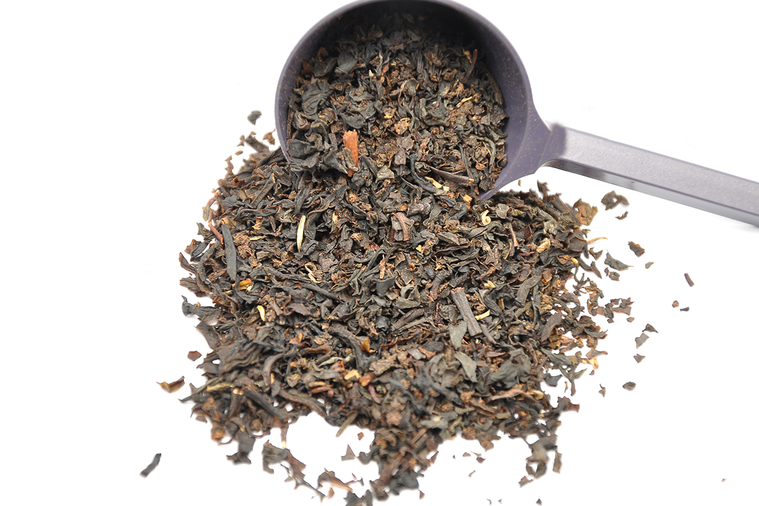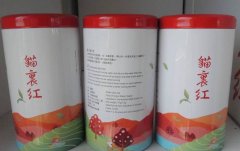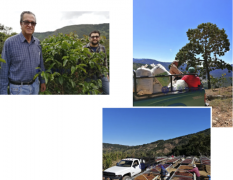Overtouted? Tea experts explain that Indian Darjeeling black tea is the orthodoxy of Indian black tea.
Today, tea is produced in 45 countries around the world, second only to water, with a market of 900 billion US dollars. But a few years ago, India was the world's largest tea producer; although it has been overtaken by China in recent years, India still produces about 1 billion kilograms of tea a year.
There are six kinds of tea: black tea, oolong tea, green tea, yellow tea, white tea and Pu'er tea. They all come from the same plant. The difference is the process of processing. Almost all Indian teas are black, meaning they are withered and fermented to release certain special flavors. Green tea has not been withered or fermented, while oolong tea is only semi-fermented. However, the vast and climate-diverse tea-producing areas of India, from the jungles of the lowlands to the foothills of the Himalayas, mean that it produces a variety of unique black teas.
A framed map of India's tea industry hangs on the shelf of the Mittal store, a cramped 60-year-old tea shop in New Delhi's quiet Sundar Nagar market market. The border of the map is trimmed with blue tea buds, and the hue is the saturated golden-green color of Kodak's 64-centimeter slides from the 1970s ○ era; on this map, the country is raised, like an old-fashioned wooden puzzle, protruding from the base, with a three-dimensional thickness, but surprisingly flat. The green blocks are manor areas, with branches in the northeast of the country, ridges in the south and strongholds in the north. Each tea area injects some different features into the final teacup, from rich Assam tea to Nilgiri tea, which may have a wonderful vivacity and aroma, with a certain sense of freshness.

Darjeeling has only 87 manors. All together, there are only 19500 hectares of tea trees. That's not much; Balmoral Estate, the estate of Queen Elizabeth II, is as big as it is. They produce only a small portion of the world's tea, less than 1% of India's total tea production. However, tea from such a small number of crops is an indispensable jewel in the crown of Indian tea, the most iconic brew of tea, and the international standard-bearer of Indian tea. Here, ecology, history, tradition, culture and regional characteristics come together to create a noble crop with a quintessence that cannot be copied.
"it has a certain richness," said Wickland Mittal (Vikram Mittal) in his busy store on a recent autumn morning. He sipped a small cup of spring-picked tea from Jungpana, a manor within walking distance of the main road and considered by many in the industry to be one of the best tea-producing estates in the area. "richness and flavor. The return between lips and teeth. A complete experience. "Mittal is about 50 years old and is long and lanky. He has rimless glasses on the bridge of his nose, and he still retains the enthusiasm and curiosity of a young science teacher. "it has a certain degree of richness. It has that complicated feeling after you drink it, "he said quietly." when you drink it with other teas, you can feel it. If you only drink Darjeeling Tea, it seems nothing special. At first, I thought Darjeeling Tea was overtouted. But when I started drinking with other teas... "he finished the cup of Jompana's tea and then shook his head gently. After drinking thousands of cups of tea over the years, he was still amazed at the flavor that the Darjeeling Mountains could produce.
"you can't create a flavor," says Sanjay Kapoor (Sanjay Kapur) of Old Delhi on the other side of Mittal's shopping district, of Darjeeling tea sold at his refined teahouse "Aap Ki Pasand". "it's natural. "
To be exact, Darjeeling Tea is the orthodoxy of black tea. Its leaves are withered, twisted, fermented and dried in traditional ways. Today, orthodoxy means top-notch tea picked and processed by hand.
However, at present, more than 9 ○% of the world's black tea (and most of it from India) is produced by a method called CTC (cut shredding, tear shredding, curl rolls). In the mid-20th century, with the popularity of tea bags, a new method of processing tea was developed, making it more convenient to pack tea into small tea bags and brew rich tea more quickly. CTC is the origin of the name of this brewing beverage. Instead of rolling the tea, the factory machine uses a blade to cut the tea into small pieces at different speeds. As a result, the tea is as brown as chocolate, average in size and pebble-shaped, unlike the slender and sturdy of orthodox tea. Although CTC tea is simple and cheap to produce, it lacks different levels of flavor. Tea tasters pursue what is known in the industry as "good soup" (good liquoring) with color and concentration. The best way to evaluate is to add a drop of milk to the cup of tea. This drop of milk will disappear into the dark tea before it is dispersed, turning the cup of tea into a plain grayish brown.
. Darjeeling: the God of the Gods, the colonial trade, and the history of the tea empire where the sun never sets. Author: Jeff Kohler.
. book title: Darjeeling: the God of the Gods, Colonial Trade, and the History of the Tea Empire without setting Sun
. author: Jeff Kohler
. translator: you Shufeng
. press: wheat field
. publication date: 2018-08-02
"Darjeeling Tea is a completely different thing," Kapoor said.
Darjeeling Tea's posture is like a rebound to other Indian black teas. Patience overrides speed, like the best female voice, and can lead the body to a state of fineness and elegance. Its quiet, unparalleled nobility lingers on the taste buds.
- Prev

Miaoli County "Maolihong" quality black tea evaluation competition, this year entered the eighth year, the county has 32 tea farmers, businessmen a total of 178 points to participate in the competition. After two days of evaluation yesterday and today, Yang Minzhu of Miaoli City won the special prize, and the price per jin was as high as 20, 8000 yuan. The judges thought that this year
- Next

No. 7 Donrio Manor in COE, Costa Rica, 2021
Donrio Manor-San Isidro Labrador Manor Don Daro-Hacienda San Isidro Labrador Estate Manor: Johel Monge was founded: 1980, 2016 began to grow coffee: Costa Rica: multi-tower production season: 2020amp 2021 altitude: 1
Related
- The first cup of black tea in spring, the flavor and history of tea gardens in Kenya, Africa
- The computer can not only choose potatoes, but also grow tea rice. AI will grow winter oolong tea champion.
- It is not only the inflated tea bitten by insects, but also engraved with the four seasons tea in Beipu.
- The Oriental Beauty Tea Festival in Zhuxian County takes the stage at the weekend to experience the plus-size feast of oil tea.
- & quot; Oriental Beauty Tea & Exploration of Emei in Hsinchu, the hometown of quot;
- The new variety of strawberry "Tainong 1" dessert is the first choice with mellow aroma. Crimson gorgeous
- History of Tea in Taiwan: from Wild Inner Mountain to Export Tea Garden
- Two types of Taiwan Oriental Beauty Black Tea won the British three-Star Award for Childhood Tea Xiang Zhang Jiaqi changed from pilot to champion tea maker.
- Banana species and varieties: the planting history of Taiwan Xianren banana and dwarf banana is long, is banana disease resistant?
- Coffee planting Technology: Qianjie Coffee from Seedling to harvesting

